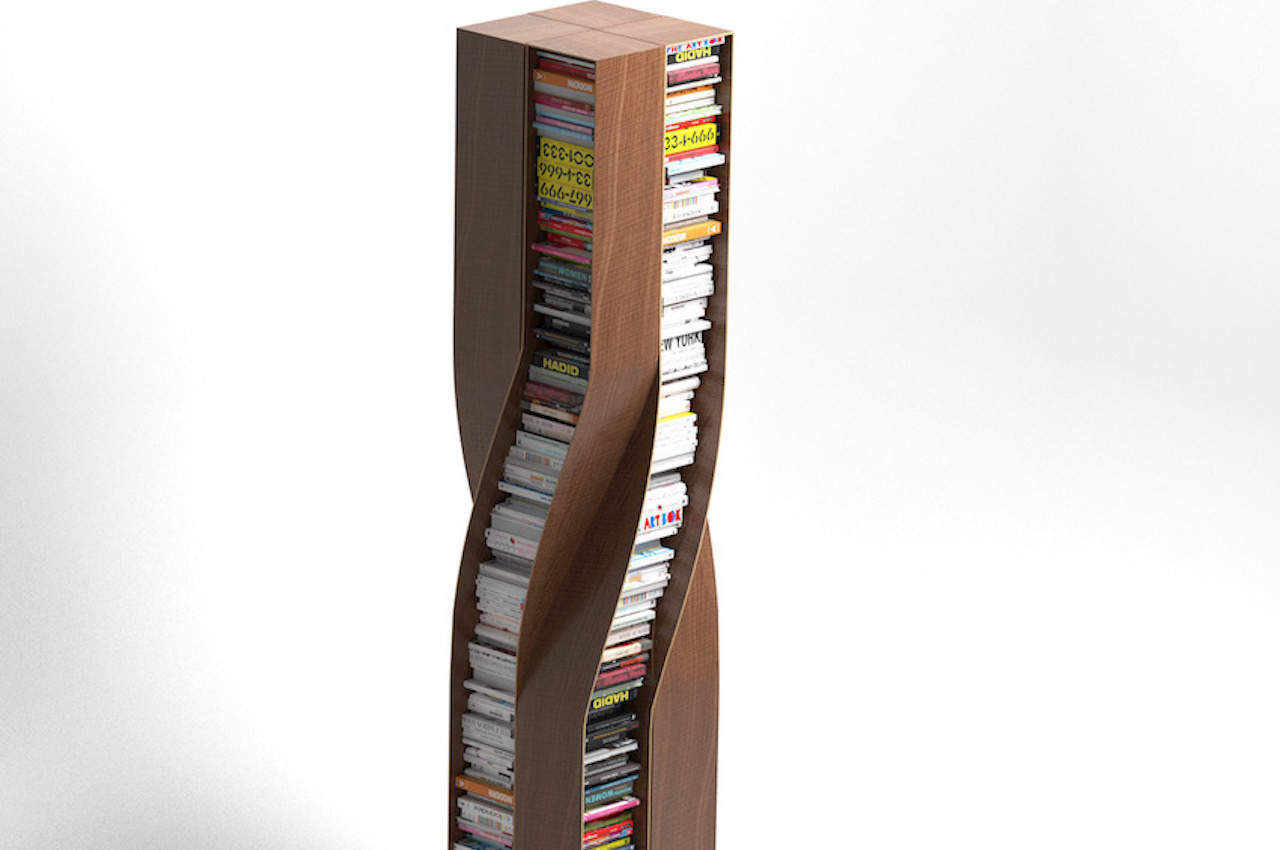
A beautiful piece of furniture can complete a room. It can be the final piece that makes a space come full circle, building a comfortable and cohesive haven, rather than a random area. Furniture pieces make or break a home, they add on to the essence or soul of a home, hence one needs to be extremely picky while choosing a furniture design. The design should be a reflection of you, and what you want your home to be. When you place a piece of furniture in a room, it should instantly integrate with the space, creating a wholesome and organic environment. We’ve curated a collection of IKEA-worthy furniture designs that we believe will do this! From a bookshelf with a plot twist to a chair that’s meant to tip – each of these pieces is unique, well-crafted, and made with a whole lot of love, and the love really shines through in the fine detailing and workmanship. We hope you feel the love too!
1. The Plot Twist Bookshelf


Prolific German furniture designer Deniz Aktay has recently introduced the Plot Twist Bookshelf. It’s a piece of furniture that features four separate twisted wooden elements. They are connected to each other, shaping and creating a stable form.
Why is it noteworthy?
The bookshelf’s design allows it to be accessed from every side. As with most of Deniz Aktay’s product designs, this bookshelf is oddly satisfying. The curves are present as with the designer’s other projects. In addition, most of Aktay’s works have undergone some bending or twisting, as with the Wavelet, the Tie Stool, and The Pet Table.
What we like
- The shelves can accommodate similarly sized books for a clutter-free look
- The bookshelf is stable and stands on its own
What we dislike
- Space consuming design
2. The Circus coffee table concept


The “Circus” coffee table concept is designed to bring people together in a more active and almost chaotic way. It’s taller than most coffee tables, tall enough to be a regular desk. In fact, it can even be used as one and has features designed to accommodate working on it.
Why is it noteworthy?
The table’s jumble of shapes and materials is almost chaotic, just like a circus. You have a predominantly wooden table with metal components that add functionality to the table. The large circular hole in the middle turns the disc into a donut and reveals two triangular shapes that form the legs of the table. Instead of a solid cylindrical base, the table has metal bars and doors on opposite sides, creating further contrasts in terms of design.
What we like
- The bars serve as slots for books
- The solid panels, on the other hand, are doors for storage, as well as a way for charging cables to go through without dangling from the edges of the table
What we dislike
- It’s still a concept!
- Probably impractical in setups where a wide cough is involved
3. The Diag Desk

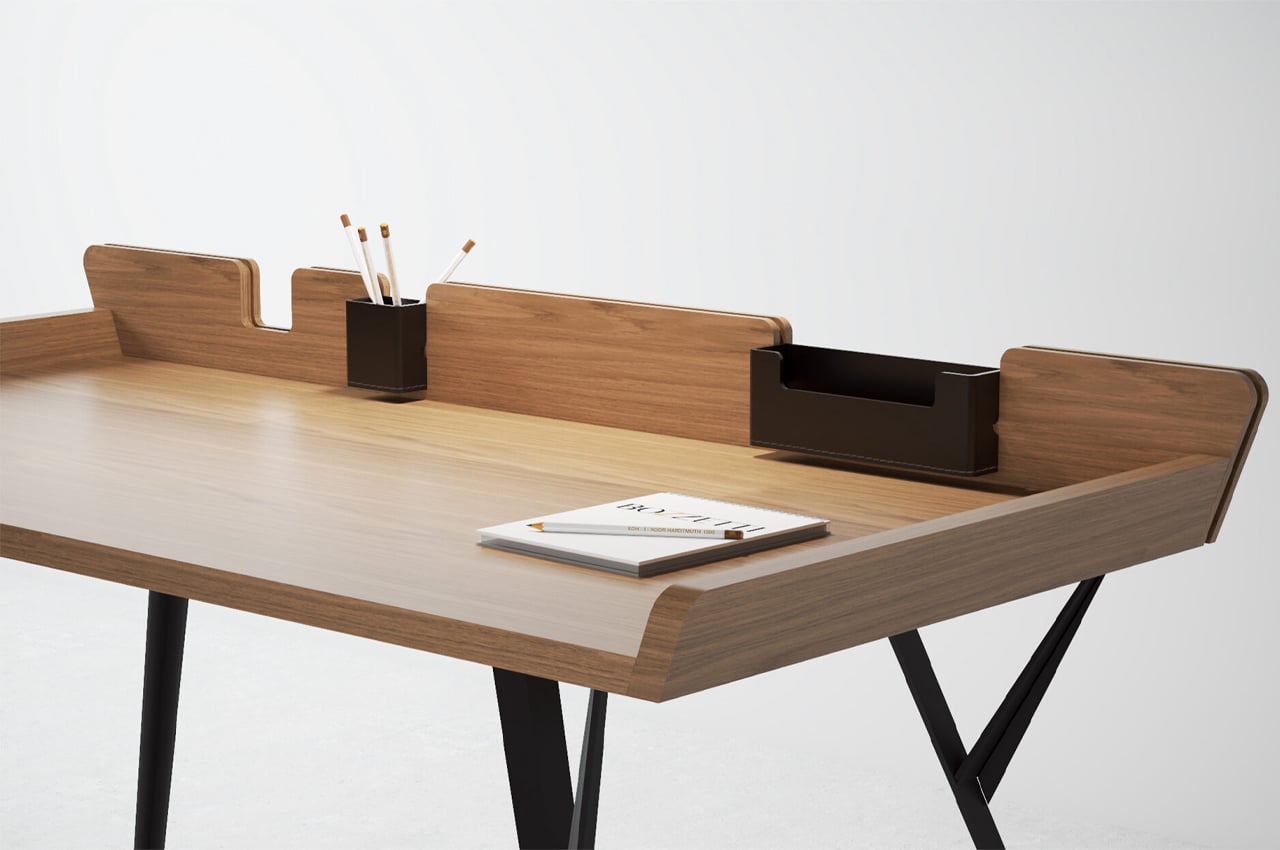
The Diag Desk is a minimalist, modern desk built to optimize desk space while incorporating storage elements like removable leather compartments. When it comes to desks, the simpler the better. Desks that are rooted in simplicity, either through a minimalist approach or by embracing Scandinavian aesthetics, typically offer a lot of practicality while maintaining a stripped-down design.
Why is it noteworthy?
Considering its minimalist build, more space can be devoted to the desk’s tabletop, where most of the desk’s purpose is reserved. The Diag Desk from Polish designer Marek Błażucki is one kind of minimalist design that integrates storage systems into its build, ensuring that users have ample desk space while still keeping their necessary stationery within arm’s reach.
What we like
- Integrates ample storage systems into its build
- Ensures stationery doesn’t fall off
What we dislike
- There are a lot of visually similar desks on the market
4. The O TRL
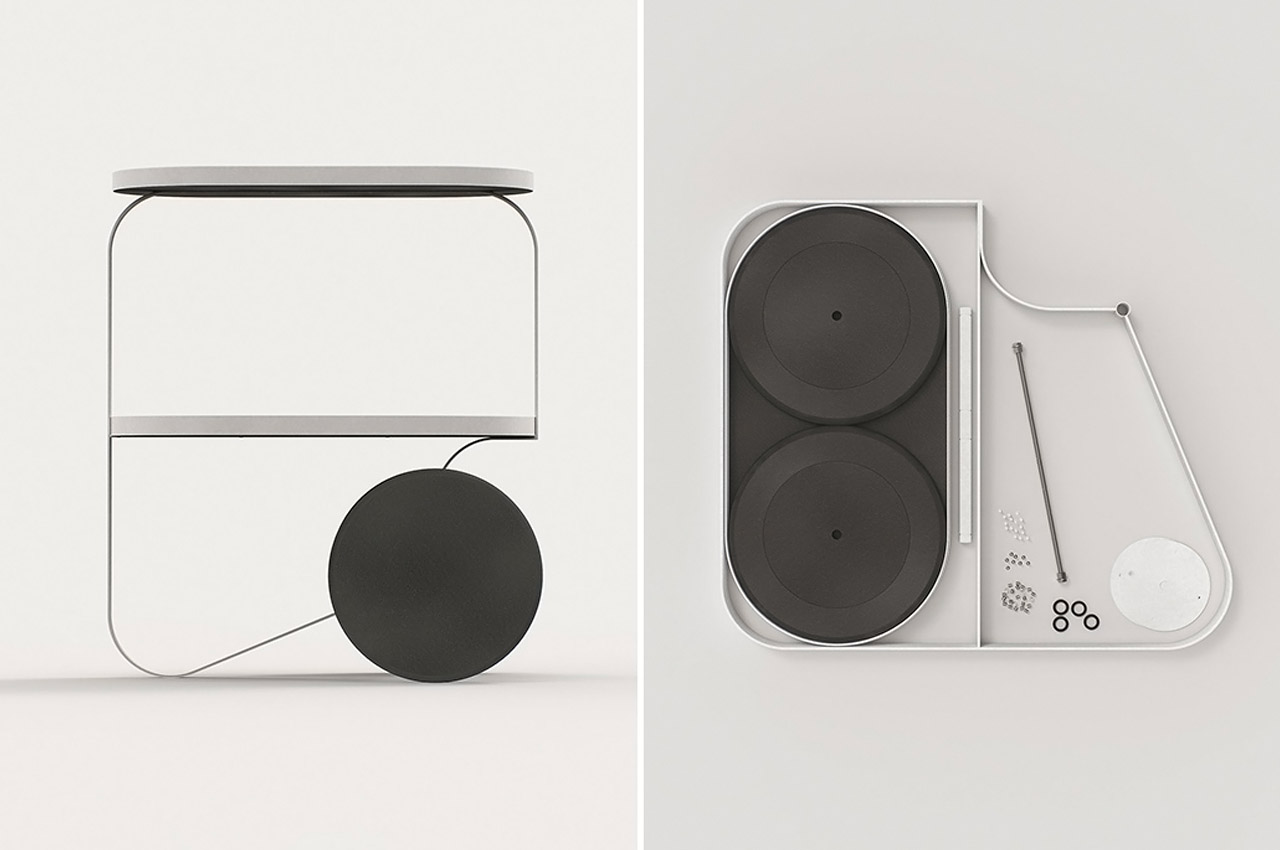

What the world needs more of is minimal and elegant furniture like the O TRL by Annabella Hevesi. Annabella created this tray table as a versatile piece of furniture – use it to store your stationery, kitchen knick-knacks, or as a makeshift desk in work from the home emergency scene – the pure and minimal aesthetics of this design make it a perfect match everywhere.
Why is it noteworthy?
The trolley has a slim and sleek silhouette and is constructed using a black MDF board, powder-coated steel, and rubber. Do not be fooled by its humble looks; this tray can bear its fair share of weight and move around smoothly, given its large weight-bearing wheels.
What we like
- Can bear weights
- Moves around smoothly
What we dislike
- The design looks a little frail
5. The Tippi Chair
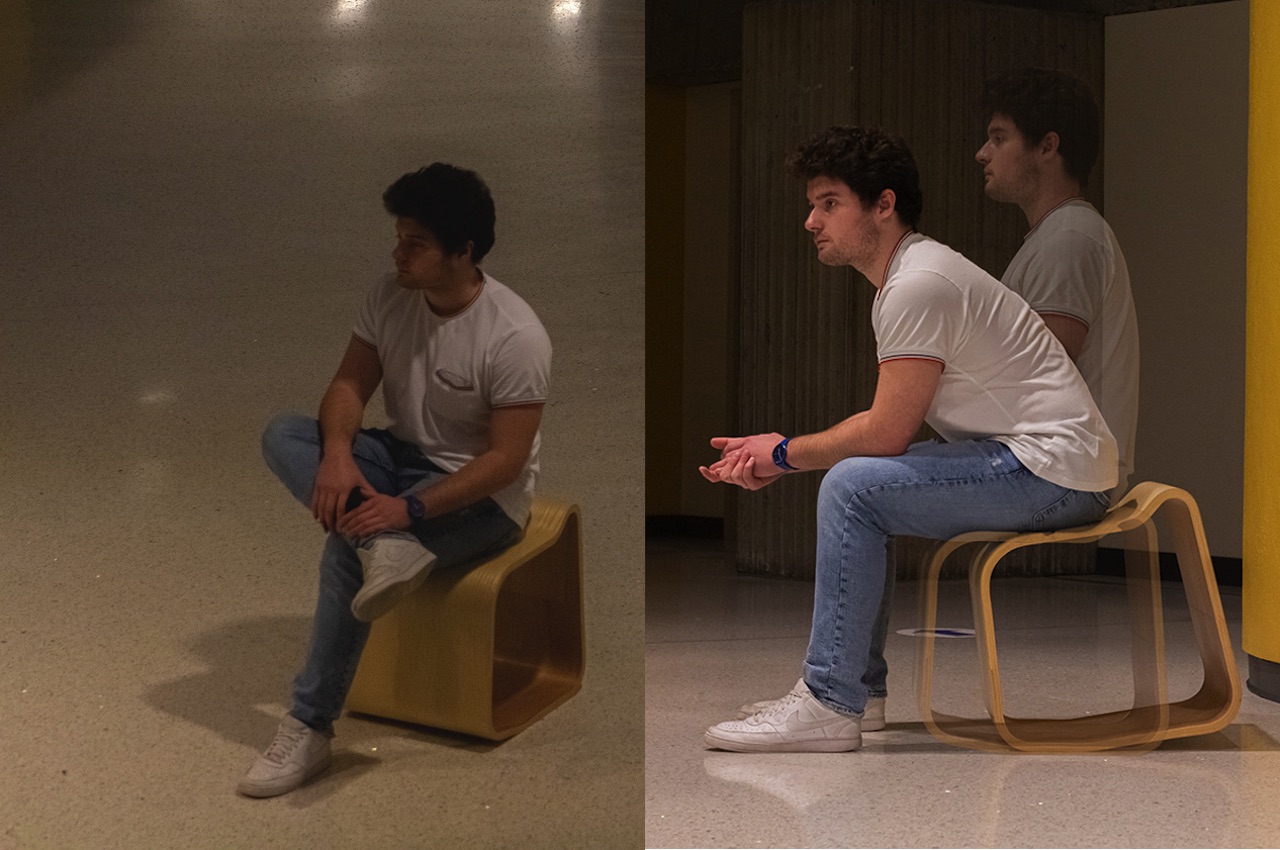
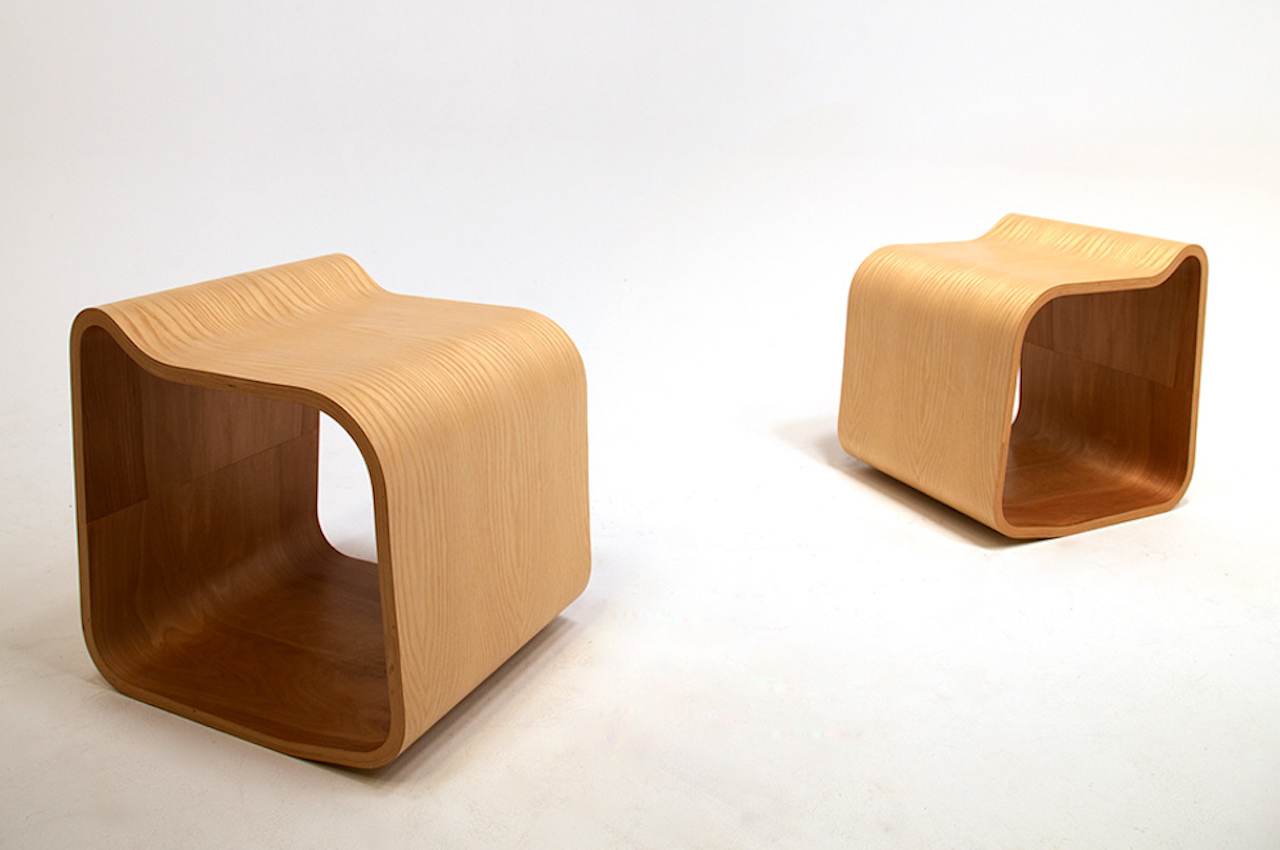
For Joshua Corder, the Tippi Chair tells us a person’s tendency to play with a chair, so it tips over. Instead of coming up with an asymmetrical chair, he comes with something that has a sloped back and angled front. The Tippi Chair’s name is derived from the “tip” movement.
Why is it noteworthy?
The chair with the height of a stool offers a tip function which is made easier with a 5-degree tip angle. The Tippi Chair doesn’t really have separate legs but the front and back support serve the same purpose. There is a small curved backrest that makes it easy for anyone to grab and carry the chair. The space underneath serves as storage for your bag or shoes.
What we like
- Ideal on an entryway, allowing you to sit down and wear or take off shoes with more convenience
- Offers a tip function
What we dislike
- It’s not something you can use as a dining chair or as an office chair
6. Chaise Espinhal

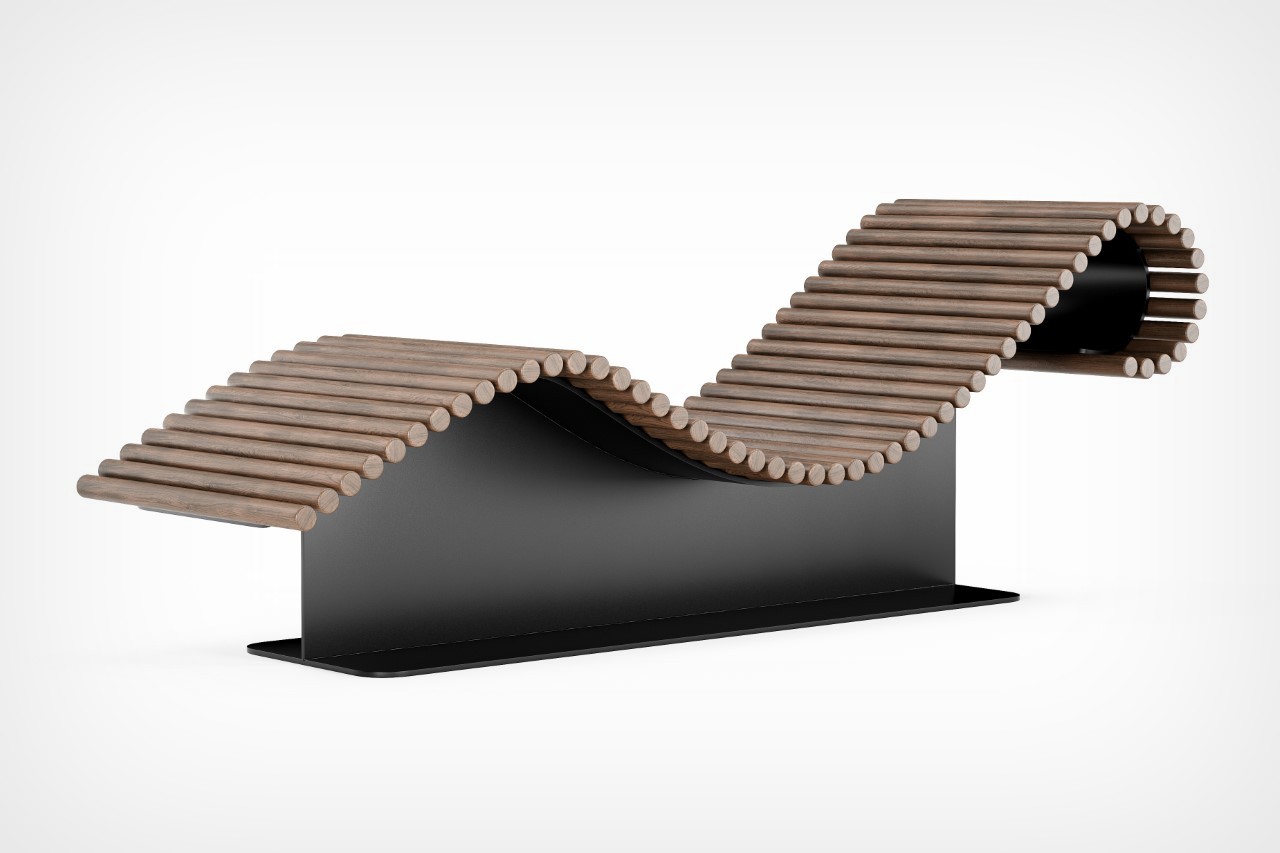
Named Chaise Espinhal or ‘Spinal Chaise’ in Portuguese, this unique-looking chaise lounge comes with an incredibly memorable design, featuring a spine-inspired rest made from 56 individual wooden cylinders aligned together and mounted on a sheet metal base. Depending on where you look at it from, the chaise does look like it has its own spine, and I imagine it would be rather fun to sit on (sort of like those wooden-bead car seat covers!
Why is it noteworthy?
There’s an undeniable dynamism to the Chaise Espinhal, even though it’s pretty static to look at. The wood follows a Gestalt of continuity, creating a wave-like surface through a series of 56 wooden cylinders lined up precisely. The chair isn’t just visually appealing, it has a raw tactile quality too, and I can bet my bottom dollar that your hand will want to run itself along the wooden surface at least once!
What we like
- The wood takes on a more human-like appeal, with its skeletal inspiration
- Thanks to its sheet metal and wood construction, it can comfortably take on the weight of a human
What we dislike
No complaints!
7. The Tie Stool
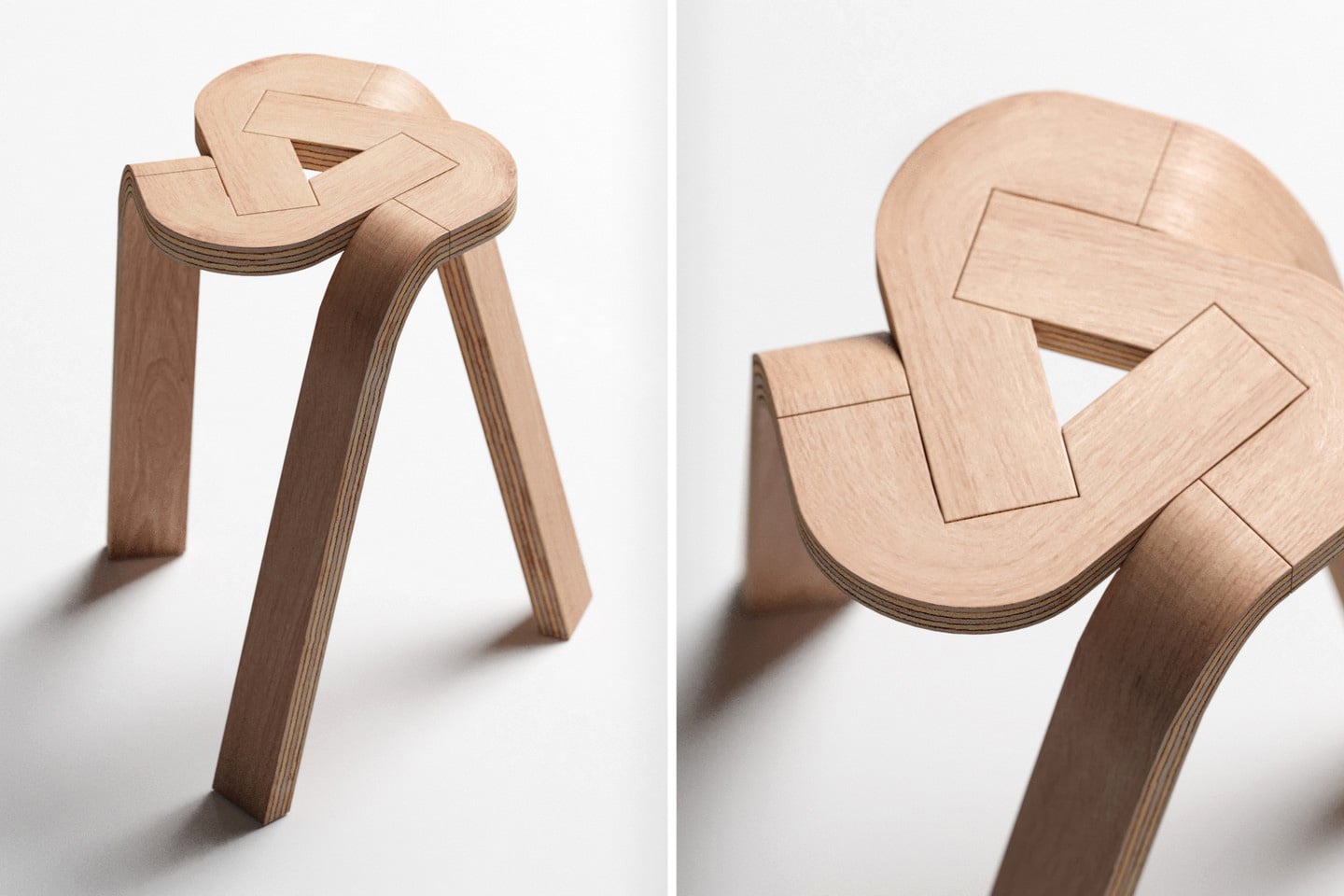
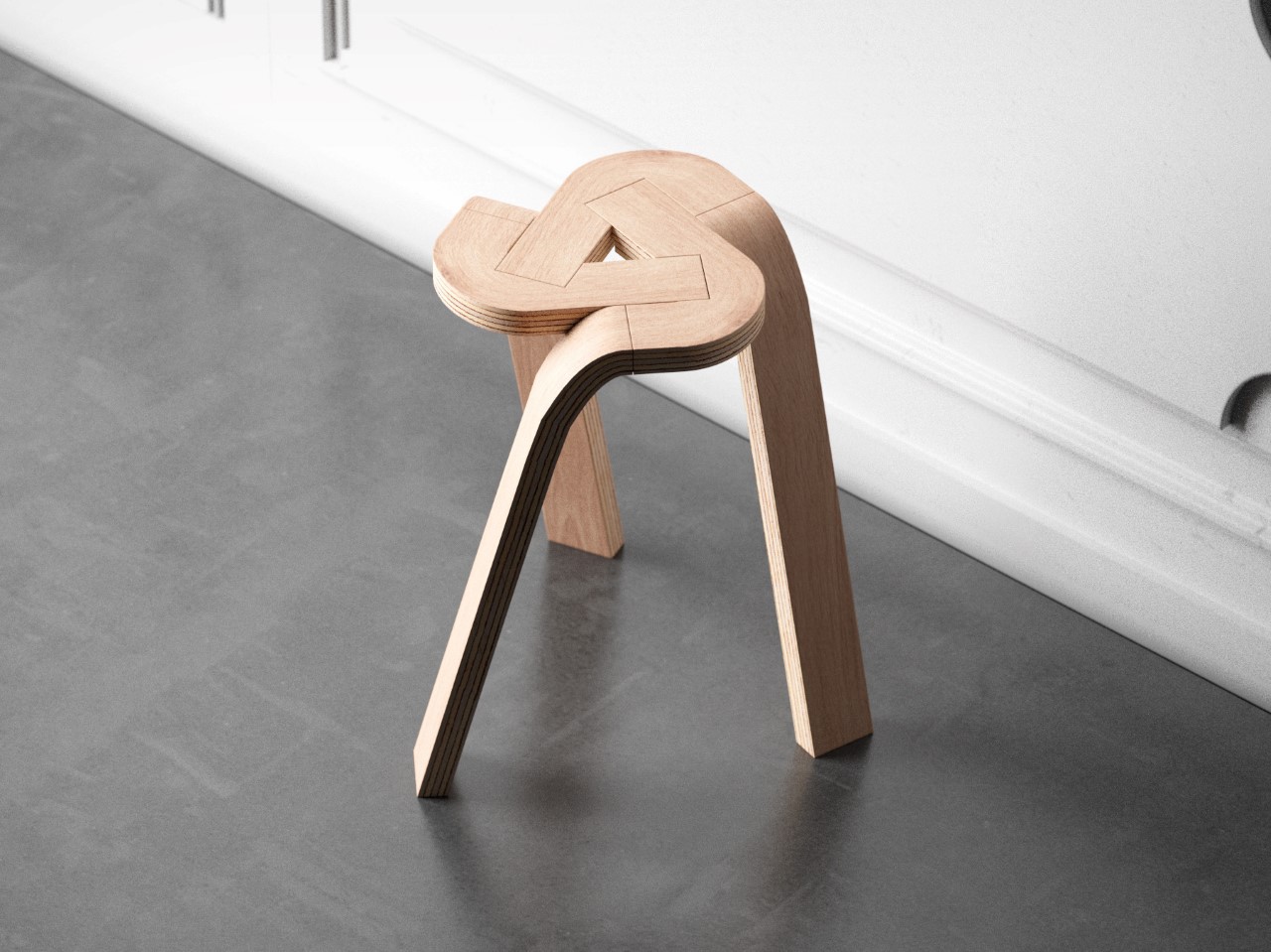
The Tie Stool’s beauty lies in its sheer simplicity – not just design but also materials. The stool comprises three bent plywood strips that conveniently lock into each other, creating a tripod form that you can easily sit on. The design could easily expand to accommodate more strips to create a 4-legged (or even 5-legged) stool, but the dynamic nature of having a tripod format really gives the Tie Stool its appeal. I don’t know about you, but I can’t unsee the Google Drive logo in the stool’s design!
Why is it noteworthy?
Fabricating the Tie Stool would require a few simple steps. The three plywood strips can, in fact, be split into 6 total parts (you can see the parting lines). The individual parts are formed using high pressure and temperatures that cause the plywood to bend and retain its shape, and cutting/finishing processes are performed on the parts to make them interlock into one another.
What we like
- The entire stool can potentially be flat-packed and shipped to customers
- It’s stackable
What we dislike
No complaints!
8. The Tadashi
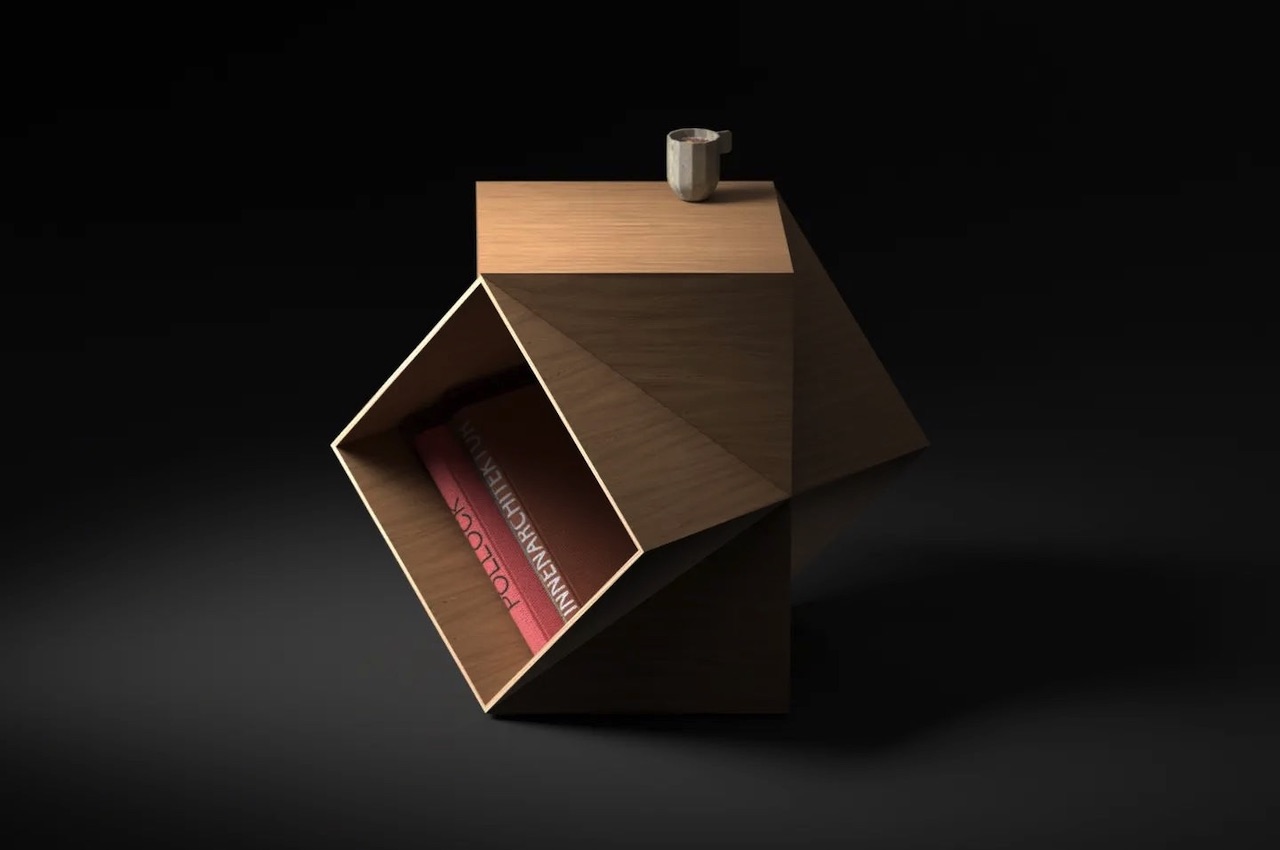
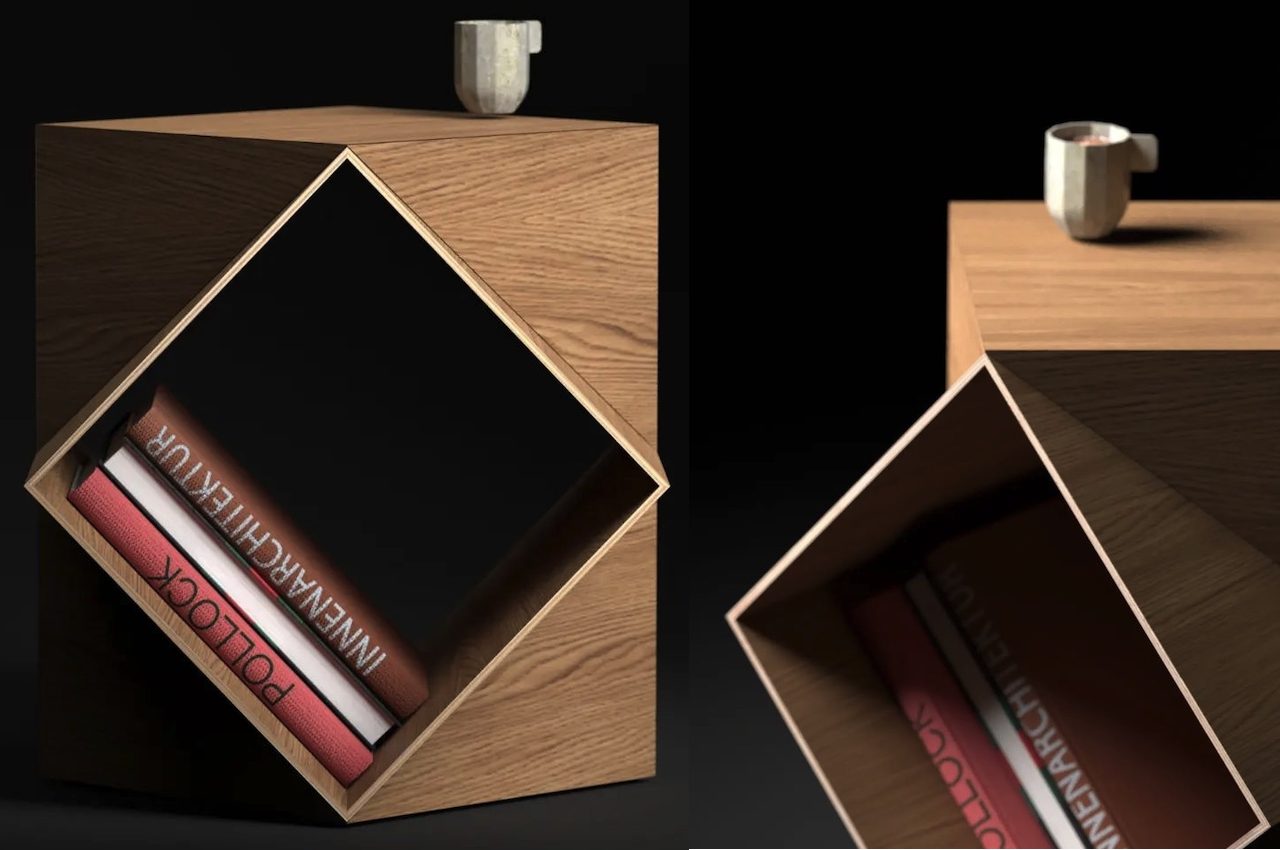
There seems to be a theme among Deniz Aktay’s designs. He has already designed a slew of side tables with some bending action on the tabletops. This time around, the tabletop bends on one side, turning into a transport handle. Like his other designs, the Wavelet and the Rool, the Tadashi shows corners that bend. There is no curve, but the lines and edges offer different surfaces.
Why is it noteworthy?
The side table appears to be two hallow cubes intersecting. The effect is a space underneath for storage. The area can be used for your books or other knickknacks. It can also be a space for your pet cat or dog where they can just lounge or sleep. It can also be used to store cushions, pillows, and blankets.
What we like
- The space is like a stomach which can be used to store anything
- The wood finish offers a natural warmth, so it can fit most interiors
What we dislike
No complaints!
9. Acrobat

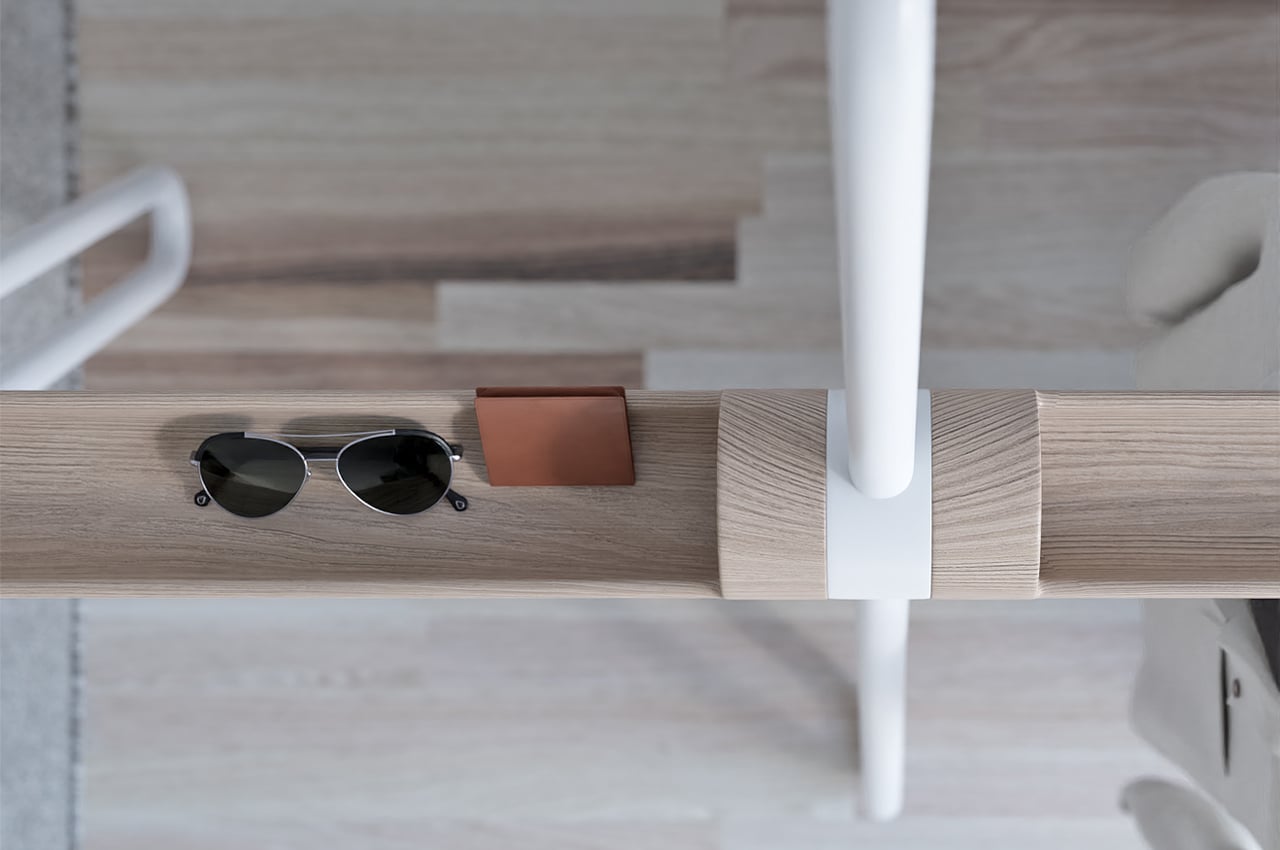
Acrobat is a multifunctional storage piece that combines the safekeeping components of an entryway table with the hanging function of a coatrack.
Why is it noteworthy?
As we continue to downsize our living spaces, the more multifunctional our furniture is, the better. Smaller spaces don’t necessarily have to mean less living space. Multifunctional furniture helps make more room for living while taking care of a lot of our household tasks. We usually have our own system of arranging EDC items like key rings, wallets, and phones. Entryway tables and coat racks usually take the brunt of those organizational needs, so finding multifunctionality in their design is key to keeping our homes decluttered. Acrobat, a multifunctional coat rack designed by João Teixeira, combines the storage components of an entryway table with those of a coat rack.
What we like
- The metal tube tops can also be used to hang clothes or hats without the need for a hanger
- The wooden hull that interlinks the beams offers a safe space to store EDC items like wallets, phones, and keyrings
What we dislike
- Can occupy a substantial amount of space
10. The Collapsible Wood Chair
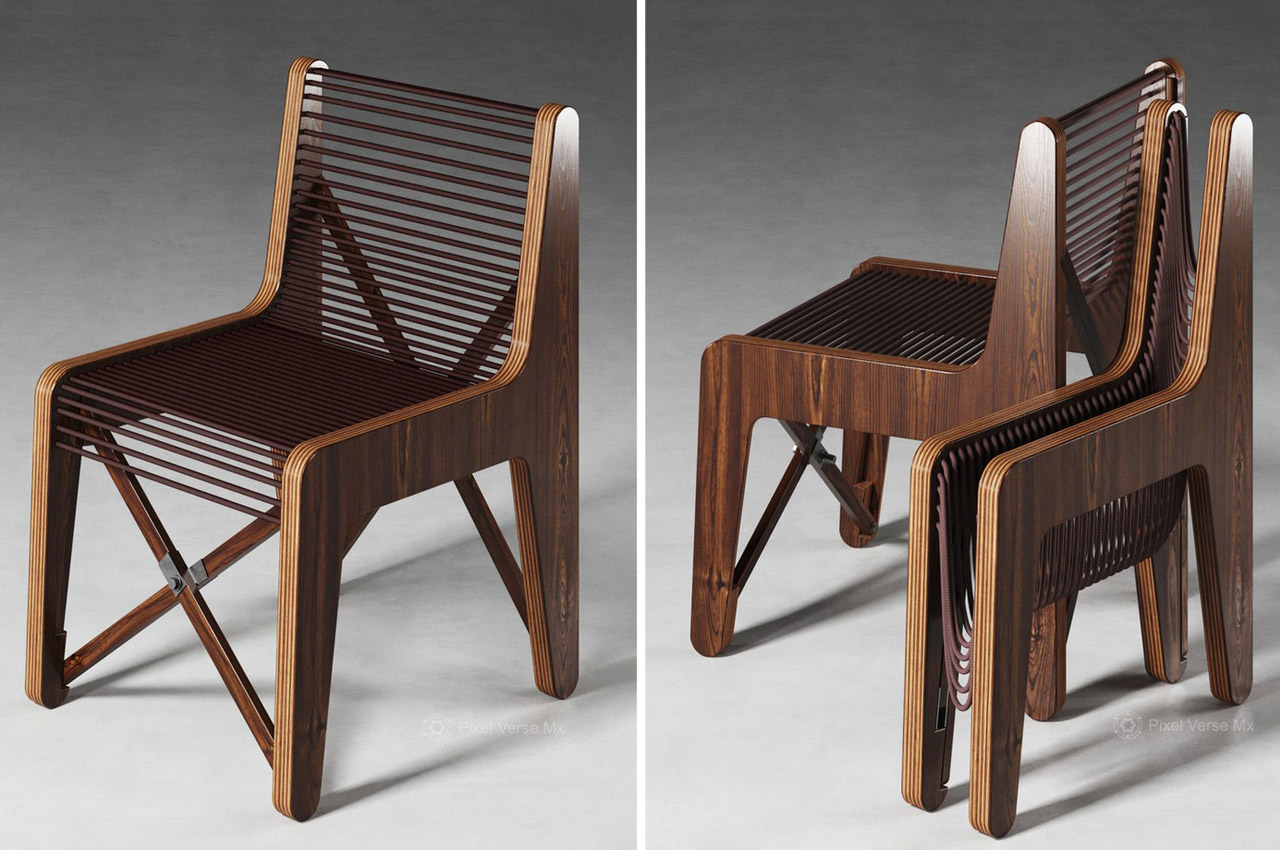
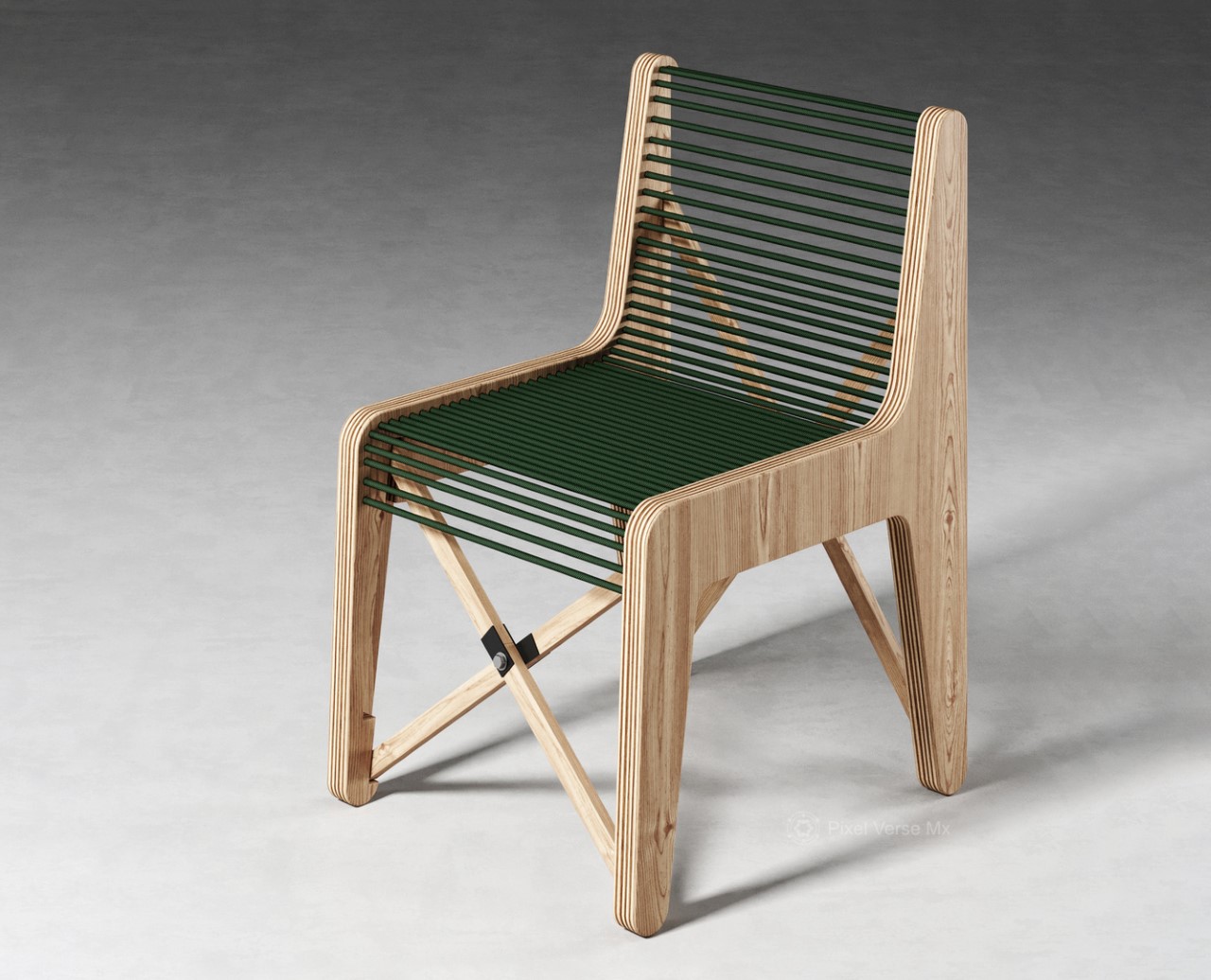
Quite unlike any of the folding chairs you may have seen around you, on the internet, or even on this website, this creative little number comes from Jon 117 SP, a designer based out of Léon, Mexico.
Why is it noteworthy?
Simply titled the Collapsible Wood Chair, the seating uses two almost-identical wooden profiles with a thick paracord weaving between the both of them to form the seat and backrest. The paracord does two essential things – not only does it make sitting feel comfortable (unlike wood or metal which feels rigid), but it also adds a flexible element to the seat where it folds together, allowing the chair to collapse flat when you’re not sitting on it.
What we like
- A unique take on a collapsible chair
What we dislike
- We’re not sure how comfortable it would be to sit on the paracord
The post IKEA-worthy furniture designs to create the ultimate modern living space first appeared on Yanko Design.
from Yanko Design

0 Comments